LEDs transform a White Christmas into a Green Christmas– 高
关于恶意转载本网原创文章,故意删除高工LED字眼的严正声明
Driven by energy efficiency and other advantages, holiday lighting is going through a market transformation to LED technology, writes Brian Owen, our Canadian Columnist. Seneca Niagara Casino This year, I decided to once again take my Christmas dinner repast high above Niagara Falls, Ontario, Canada at Watermark, the rooftop restaurant of the Niagara Falls Hilton. For the past 3 holiday seasons, as long as I have been working with the Niagara Falls Winter Festival of Lights, I have enjoyed this view, watching the ever-growing panorama of LED, from the Casino Niagara signage and the recent colour-changing building illumination on the Canadian side of the river to the bold light show on the Seneca Niagara Casino on the US side of the river and to the LED outlining the Niagara SkyWheel on Clifton Hill.Brian Owen Looking down over the Niagara Parkway, the Winter Festival of Lights displays and tree lighting spans as far as the eye can see. Both in the traffic signals and in the taillights of the many vehicles traversing the Parkway, along with many architectural and holiday displays, LED is everywhere in view.
This story is a Christmas Carol of a different kind, one that looks at the past, present and future of LED from a ‘light’ seasonal outlook and from the beginning of my involvement in the industry. The only ghosts are those of the disappearing incandescent lights, both in holiday and general illumination applications.
Niagara Skywheel Over the holiday season, and from across North America, there were numerous accounts of spectacular light displays and festival venues; utility programs including incentives such as rebates, incandescent exchanges and turn-ins; holiday conservation tips and retail sell-outs. ‘Green’ articles, news stories and blogs extolled the virtues of LED holiday lights, such as energy conservation and efficiency, long life, low maintenance and the resultant environmental benefits.
I am not going to belabour the same story, however it is not my intention to belittle the value of LED by referring to these accounts as the same ‘old’ stories. It is my intention to share a different perspective. Hence, the story that I wish to relate is one that identifies how LED holiday lights have ‘LED’ the way and are ‘lighting’ the path to everyday awareness and consumer adoption. This is the process known as Market Transformation.
Holiday lighting
Back in the spring of 2003, my energy analysis practice and consulting firm was presented with an information request from the Ontario (Canada) Business Improvement Area Association, part a movement that was fundamental to the process. A Business Improvement Area is a municipally designated and legislated economic district that is essentially a collective of business and property owners that share a common interest in the beautification and promotion of the business district.
Zimmerman fountain We were asked to review LED holiday light strings for their energy and life claims for use in holiday tree lighting. As I was a Board Member of the Downtown Hamilton (Ontario, Canada) Business Improvement Area (BIA), we agreed to complete this task pro-bono. This was a rather simple task as the technology was obvious and spoke for itself. At that time there was no manufacturer history to address quality or longevity and the product was definitely not a robust as it is today. Earlier comments that the LEDs were lack lustre with respect to brightness and colour have all but few been replaced by accolades.
I must say that timing was everything and I was very fortunate to become involved in the marketing of the product. A year earlier in 2002, BC Hydro (British Columbia, Canada) purchased approximately 20,000 sets of LED holiday light strings from David Allen of Fiber Optic Design (Philadelphia, PA, USA). Allen is recognized as the inventor of the first AC driven LED holiday light string. The sets were distributed at no cost to the BC BIAs for displays and tree decorating. This was essentially a test of perceptions and reception to the technology, as well as how they would survive in the outdoor winter environment, especially one with a wet coastal climate. I don’t need to go on as to whether the test was successful. The only downfall was that people were so fascinated by them and liked them so much; they took them home for themselves. After a few modifications, the sets went into production in 2003 through a licensing agreement with Holiday Creations, a manufacturer based in Denver, CO, USA.
This is where our company entered into the picture for what was to become a 5 year journey and mission of change. Somewhat like Kirk and the Starship Enterprise, we embarked to explore new opportunities, to seek out new applications and markets; to boldly go where no LED has gone before. Understanding consumer behaviour, product and retail market development and hopefully eventual market transformation, I realized that we had to set the stage for this process.
The first objective was to bring the Ontario BIAs into the formula by having them decorate their downtown displays and trees. We also sought out the major Ontario holiday lighting festivals. In the first year, we began to convert one of the oldest being the Simcoe Christmas Panorama, as well as the award winning Owen Sound Festival of Northern Lights. We were also able to work with the Mississauga (Ontario, Canada) Symphony Orchestra to create the Mississauga Symphony of Lights, which was the very first 100% all LED holiday lighting festival from its inception in North America.
LED Exchange - New lamps for old!
Another great first also happened in Mississauga. I presented an idea to the Symphony and enersource Hydro Mississauga, the local electricity utility. Modelled after the Natural Resources Canada Switch & Save program, where an incandescent light bulb was turned in and replaced with a compact fluorescent lamp (CFL), the idea was to have consumers turn in old incandescent holiday light sets and receive a new set of LED holiday lights in exchange, courtesy of the utility. This would be the first of many to come.
Ceksters and Owen On November 28th, 2003, the Symphony of Lights was born along with the first ever LED exchange. On a cold, damp and rainy evening, over 500 people stood in line to exchange sets. enersource Hydro Mississauga held another event that year and a spike in sales was noted at area retailers on the days following both events. With one sample set in hand, consumers flocked to the stores to match up this set with others in order to complement or complete their home display. Quantities were limited that year and product was sold out quite quickly, thus creating a pent-up demand.
Consumers started to see the ‘different’ light and two very fundamental principles came to mind. This was likely to be one of the last times that I would say that an idea came to mind represented by the turning on of an incandescent light bulb. Alike ‘show and tell’ in school, seeing the LED lights in a large display at an area festival and being given a set started the process. I would say repeatedly that the consumer could see them (in action), touch them (without fear of being burned) and smell them, the later being that incandescent light produce such excess heat that you can even smell it. With government and utility support for energy conservation and efficiency in the form of an exchange, the consumer could get started with their initial sets and turn in the energy ‘guzzlers’.
Without the support and vision of Gunars Ceksters and Ken MacDonald at enersource Hydro Mississauga, Mississauga Mayor Hazel McCallion and Lynn Lewis of the Symphony, this could not have been possible. The Mississauga event has continued to be an annual celebration and expanded in 2006 to include additional displays.
Also in 2003, many Toronto BIAs decorated their trees with LEDs and we were asked to decorate the Mayor’s tree for the Toronto Cavalcade of Lights at Toronto’s City Hall. Again without the support and vision of John Kiru, Executive Director of the Toronto Association of Business Improvement Areas (TABIA), this would have also not been possible. Visionaries like the aforementioned have been instrumental in these initiatives and the resultant market transformation. In 2005, TABIA was recognized with a Green Toronto Award of Excellence for Market Transformation.
Later, I would better understand the principle that people like the light that they like. Kind of redundant, but very applicable, especially in general illumination. This also made great sense with the advent of the ‘warm’ white LED in the 2700K range. A high percentage loved their traditional holiday lights and wanted this over the ‘cool’ white. We have seen this in general illumination products as well, especially within the architectural and lighting design community and we have learned from the initial pitfalls of the CFL. Manufacturers strive to improve the technology, as well as adapt and change, based upon consumer demand.
2004 Toronto Cavalcade of Lights In 2004, Toronto instituted a mandate for change to LED in its Cavalcade of Lights celebrations through the development of the Neighbourhood Cavalcade of Lights display in conjunction with the BIAs. In 2007, over 20 BIAs were adorned with spectacular LED displays and motifs, supplied by companies, such as Blachere Illumination Canada, Classic Displays and Shear Display, all located in Ontario, Canada.
Also in 2004, Toronto Hydro commenced the exchange and turn-in program with 6 events developing it to over 20 events in 2007. Many Ontario electricity utilities have participated over the years. Since 2004, there have been over 400 such events in Ontario, reducing the seasonal provincial electricity demand by over 10 Megawatts and seasonal electricity consumption by over 3 million kWh, equal to the annual electricity consumed by over 300 average homes.
In the November 2004 US Department of Energy Report entitled, ‘Energy Savings Estimates of Light Emitting Diodes in Niche Lighting Applications’, the DoE cited that, “… the potential annual energy savings from a total market shift to LED holiday lights (in the United States) is approximately 2.0 TWh (Terrawatt hours) …” In December 2007, Direct Energy, one of North America’s largest energy and energy-related service providers, with over 5 million residential and commercial customers, estimated seasonal spending on electricity for holiday lights to be over $200 million across Canada, with close to $100 million in Ontario and $39 million in Toronto alone. They further estimated that 50% of consumers had switched to LED and if all of Canada switched, electricity costs would drop to $40 million from the current $200 million.
Canada Welcomes You In 2005, I began a working relationship with the Niagara Falls Winter Festival of Lights to convert millions of holiday lights to LED over 3 years, as well as the decorative displays. In 2006, the Festival added an animated LED flag display that greets international visitors by changing from the Canadian to American flag and in 2007, the Festival’s 25th anniversary, added a commemorative fountain display, both designed by Blachere Illumination Canada.
In 2006, I saw the National Capital Commission in Ottawa, Ontario begin the 2 year process to change to LED, sponsored by Home Hardware, one of Canada’s largest retailers of hardware and home products. Now over 300,000 LEDs brighten the holidays in Canada’s Capital Region.
Every Kilowatt Counts 2006 also saw the development of Every Kilowatt Counts (EKC) from the Ontario Power Authority’s Conservation Bureau, a government agency mandated to deliver energy conservation and efficiency assistance and programs, such as the EKC retail point of purchase coupon booklet. It was rewarding to see that LED holiday lights were included in this program in both 2006 and 2007.
Distributed in a booklet form with a number of coupons for other energy saving product to over 4.5 million Ontario residences, over 1.6 million assorted coupons were redeemed in 2006, with over 470,000 of those being Seasonal LED coupons in the Fall campaign alone.
This initiative, along with the sponsorship of community holiday lighting festivals and iconic Christmas trees has spread through many Canadian provinces and many US states.
LED technology in 2007
Many US utilities hosted or sponsored lighting exchanges in 2007. In 2007, I had the opportunity to meet with both Laurie Reinders of Reinders in Milwaukee and Brad Steele of EFI in Boston to discuss program development and implementation in US markets in partnership with US utilities. Reinders is a leader in the landscaping industry and EFI, known for their history in energy conservation products and programs, combined this experience with LED.
Rockefeller Center Christmas tree Also in 2007, there were no shortage of stories about notable trees retiring incandescent holiday lights and being adorned with LED, from the Capitol Christmas Tree on Capital Hill and the National Christmas Tree near the White House, both in Washington, DC to the Rockefeller Center in New York City.
“When New York City Mayor Michael Bloomberg helped light the Rockefeller Center Christmas tree last month, the 84-foot-tall Norway spruce came alive with 30,000 twinkling lights. For the first time, the famous tree was illuminated with energy-efficient LEDs, or light emitting diodes, rather than traditional (incandescent) light bulbs,” reported USA Today. This blue Norway spruce was a bit ‘greener’ with 5 miles of LED light strings. A slant on the NBC television, headquartered in the Rockefeller Center, slogan of must-see TV, this is a must-see LED tree. The LED lights on the tree at the ‘Rock’ are even being powered by solar panels, another testament to the low energy requirements of LED.
As I watched the televised Christmas Day celebrations from Walt Disney World, the Cinderella Castle was adorned with LEDs forming the appearance of icicles over the castle. Quite the secret project, the result was a beautiful broadcasted display of LEDs. On the 100th anniversary of the Times Square New Year’s Eve Ball drop, even this world famous icon brought in the New Year with LED.
Times Square LED ball From The New York Times: “The new aluminum skeleton and the exterior “skin” made of Waterford crystal panels that covers thousands of LEDs will mean a brighter and more energy-efficient ball… The old ball had 600 bulbs; the new one has 9,576 L.E.D.’s. The old ball’s light level was 291,541 lumens; the new ball’s level is 625,033 lumens… But even though it is twice as bright, the new ball is easier on the environment. Each L.E.D. on the ball generates the same amount of light as one of last year’s bulbs but uses 87 percent fewer watts. The net result is that the new ball will use about 15,000 watts compared to the old ball’s 30,000 watts… In other words, power up 10 toasters, keep them toasting for six hours — the length of time the ball is lighted — and that will be the equivalent amount of electricity. “With half the amount of power, you’re getting twice the amount of light, so it’s four times more efficient,” said Brett Andersen, general manager of Focus Lighting.”
Quoting CNN: “Its the one time of the year when it is good to drop the ball.” It was exciting to watch this momentous occasion, for both Times Square and LED. We have come a long way. This international awareness of and education about LED is exceptional and will put LED ‘front of mind’.
The CN Tower in Toronto also brought in the New Year with an LED light show simulating the countdown. Both New Year’s Eve venues, along with the Saks Fifth Avenue LED snowflakes, employ technology from Philips Lighting.
According to Philips, LEDs dazzled holiday shoppers with a luminous LED snowflake display in the windows of the Sak’s Fifth Avenue flagship store in New York City. This high-tech light show combines holiday tradition and advanced technology by using 40,400 upgraded LEDs to create 50 8-foot and 20-foot illuminated snowflakes that reach 10 stories high, and will feature a snowflake LED-light show choreographed to a modern version of “Carol of the Bells.” Toronto’s CN Tower, the world’s tallest freestanding tower, is illuminated by a Philips LED lighting system and its grounds now feature a 50-foot holiday tree that incorporates the same technology. The tree is wrapped with 1,250 tri-color LED nodes that are individually programmed to produce dynamic lighting sequences. Each 50-node strand of light consumes just 50 watts of energy at full intensity, whereas a comparable strand of 50 conventional C9 lamps would consume 350 watts.
We are already seeing changes to the static, one colour holiday light. In 2005, Pharos Innovations, a Toronto, Ontario company, patented a controller to allow 2 colours of LED to smoothly morph in a periodic cycle. Aptly named ColorWave, the technology was licensed to Holiday Creations, the major global manufacturer of LED holiday light strings. I have had the opportunity to add this effect to many of the major lighting festivals. Consumers were pleased as they could buy this product for their own home displays.
So what is this Market Transformation?
C6 LED Holiday Lights In each and every case, the displays, icons, landmarks and utility programs have increased demand and retail sales to consumers. With additional awareness and education comes greater consumer understanding, which in turn allows consumers to make conscious decisions on their own. It is a domino effect. Although we hear much talk about banning the bulb, the best ‘banning’ agent is you, the consumer, for without interest or sales, retailers do not carry products that do not or will not sell, thus closing the door to availability of obsolete technology. In 2003, less than 10% of holiday lights sold were LED and in 2007, less than 10% of holiday lights available for sale were incandescent. A complete reversal in 4 years, now that’s market transformation! As alluded to earlier, this is also ‘lighting’ the way for the interest and acceptance of general illumination products as consumers have become more familiar with LED due to products such as holiday lights.
Recognition in Canada is also given to western Canadian lighting wholesaler Brite-Lite and holiday decoration distributor Danson Decor, both who specialists in quality LED products. Brite-Lite supplies the commercial decorating, festival and utility markets while Danson supplies Canadas largest retailers. Both have contributed to a successful Market Transformation process.
As you can see, Canada has made a major contribution and has played a significant role in the development of this market, from festival firsts and exchanges to technology advances and the development of and releasing the ENERGY STAR criteria for Decorative Light Strings. The industry is currently watching the progression of ENERGY STAR criteria for Solid State Lighting, so very important to assuring the energy efficiency and quality of SSL in general illumination.
And finally, you know when a product has arrived when Consumer Reports (CR) conducts independent testing. CR reported that LEDs won over in energy use and costs, as well as durability. Brightness was still in question, yet CR found the mini LEDs brighter than incandescent. Overall, CR concluded that LEDs are better for the environment; run much cooler, reducing fire risk; should last longer; and save money. The jury was still out on the period of payback.
Throughout this personal ‘mission’, I as well as FIRSTeam ?C LEDesignWorks have grown to be recognized for the development of energy conservation and efficiency initiatives and programs for governments and utilities, as well as assisting manufacturers with the commercialization of related products and technology, thus both types of projects fostering the market transformation process.
In a recent interview with David Allen, inventor of the first AC driven LED holiday light string, Allen commented Since holiday and decorative lighting was a good entry point into the consumer marketplace for LED, especially at a cost that the consumer could accept, it has opened the doors for additional energy saving applications. Asked if he anticipated the dramatic and swift change in the market, Allen commented, Yes, we believed that the technology would become very pervasive. When we first entered this market, we realized that it would be difficult to introduce a superior technology and a significantly more expensive technology into an established (holiday lights) market. Asked about the differences between the Canadian and the US markets, Allen responded, Canada was by far more progressive in its reception. There was a great amount support from government and the utilities. We are now starting to see this in the US as there has been a smaller market acceptance until this past season, but the market is now definitely growing in the US.
As you know HCI (Holiday Creations) and DIOGEN (an HCI division) continue to move the technology forward in the decorative light string category. We initially introduced the FOD (Fiber Optic Design) technology in 2003 and have continued to introduce exciting innovations in this category. said John Hayes, CEO of Holiday creations, licensed manufacturer of the Allen invention, adding, LED product continues to capture market share from its incandescent counterpart as energy consumption and “green” issues become more important around the globe. Clearly Canada continues to lead in the adoption of LED technologies but the rest of the world is finally waking up to these issues as well.
It is hard to imagine that something as innocent and simple as a Christmas light could play such a part in lighting the way for LED in general illumination, but it has! We are now in discussions with the same BIAs and Municipalities for outdoor lighting, the same government agencies and utilities for technology application program development and the same properties for interior lighting applications. In fact, Toronto’s greenTbiz (), an energy conservation / efficiency and environmental practices program for business and commercial property owners, as well as LED City Toronto () are the result of the original holiday lights initiative.
As I sit finishing dinner and reminiscing over 5 years of memories I can look out over Niagara and look to the future. The Skylon Tower, a childhood memory and forerunner to Toronto’s CN Tower is in my sights and alike the CN Tower, will lend itself to a beautiful LED light show. A new tower at the hotel is also currently under construction and I think of the many lighting opportunities where LED can now be employed successfully in general illumination, especially in the hospitality industry. So, now you have my Christmas Carol. I can still hear the chains rattling from those old incandescent spirits, a little ‘hot’ under the collimator, excuse the pun.
Well, I am sure that another 5 years will bring many advancements and opportunities for LED, so it seems prudent that is again time to embark on another mission to explore new opportunities, to seek out new applications and markets; to boldly go where no LED has gone before. About the Author Brian Owen is the President of FIRSTeam Corporation and the Principal of LEDesignWorks. He is also the Program Advisor to greenTbiz , which facilitates the LED City Toronto initiative. He is actively involved in the development and operation of energy conservation programs for government, municipalities and utilities and specializes in capacity building, commercialization and market transformation. greenTbiz provides energy conservation and environmental awareness programs to the small business sector in Toronto, Canada. Brian can be contacted by email at ( Brian@greenTbiz.org or bkowen@firsteam.ca ). January 2008 Jan Feb Mar Apr May Jun Jul Aug Sep Oct Nov Dec 2004 2005 2006 2007 2008 2009
此文章有价值
手机扫一扫,分享给朋友
热门曲谱
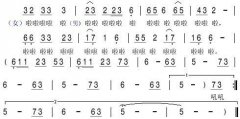 渡情笛子曲谱
渡情笛子曲谱 曲谱自学网今天精心准备的曲谱是《渡情笛子曲谱》,下面是详解!
竹笛 我想学 渡情 请问是买A还是B调 的笛子 我还要...
竹笛的调和...
[详情]分类:曲谱大全时间:07:36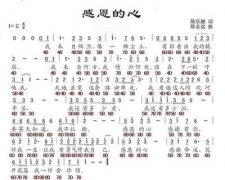 c调口琴曲谱
c调口琴曲谱 曲谱自学网今天精心准备的曲谱是《c调口琴曲谱》,下面是详解!
求c调24孔口琴简谱大全
小弟求c调24孔口琴简谱大全,邮箱:zifuchen@st...
[详情]分类:曲谱大全时间:07:36 徳德玛歌曲谱
徳德玛歌曲谱 曲谱自学网今天精心准备的曲谱是《徳德玛歌曲谱》,下面是详解!
德德玛歌曲
1. 草原母亲河
[详情]分类:曲谱大全时间:07:36
2. 蓝蓝的马莲花
3. 阿妈的...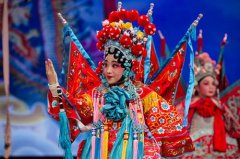 京剧青衣曲谱
京剧青衣曲谱 曲谱自学网今天精心准备的曲谱是《京剧青衣曲谱》,下面是详解!
京剧老旦唱段曲谱 与琴谱有什么区别
两者均属旦行。旦行包括:青...
[详情]分类:曲谱大全时间:07:35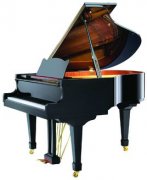 诺言钢琴曲谱
诺言钢琴曲谱 曲谱自学网今天精心准备的曲谱是《诺言钢琴曲谱》,下面是详解!
洛洛历险记的片尾曲诺言的钢琴简谱(最好有前奏)
偶然听见这首歌觉得...
[详情]分类:曲谱大全时间:07:34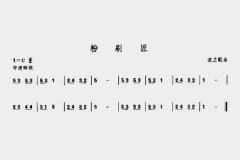 流行口琴曲谱
流行口琴曲谱 曲谱自学网今天精心准备的曲谱是《流行口琴曲谱》,下面是详解!
适合初学者的口琴简谱,要流行音乐的
我把爱铺成蓝天 ...
[详情]分类:曲谱大全时间:07:35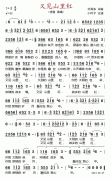 又见山里红曲谱
又见山里红曲谱 曲谱自学网今天精心准备的曲谱是《又见山里红曲谱》,下面是详解!
又见山里红简谱
分类:曲谱大全时间:07:31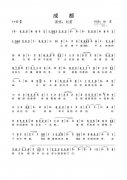 钢琴流行曲谱
钢琴流行曲谱 曲谱自学网今天精心准备的曲谱是《钢琴流行曲谱》,下面是详解!
有没有流行歌曲的钢琴简谱
樱花草,老人与海,爱转角等。谢谢。本人急...
[详情]分类:曲谱大全时间:07:29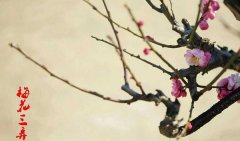 古筝乡韵曲谱
古筝乡韵曲谱 曲谱自学网今天精心准备的曲谱是《古筝乡韵曲谱》,下面是详解!
古筝 乡韵
乡韵多难?既然云裳诉是它改的,乡韵应该也很难吧,特长生...
[详情]分类:曲谱大全时间:07:27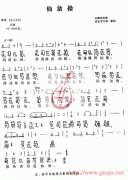 初学古琴曲谱
初学古琴曲谱 曲谱自学网今天精心准备的曲谱是《初学古琴曲谱》,下面是详解!
请问初学者如何识古琴谱,对谱怎么弹?
减字谱:
[详情]分类:曲谱大全时间:07:27
识谱还是比...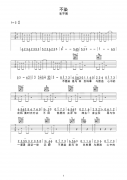 一生无悔曲谱
一生无悔曲谱 曲谱自学网今天精心准备的曲谱是《一生无悔曲谱》,下面是详解!
基督教歌曲为福音一生无悔谱
基督教歌曲为福音一生无悔谱...
...[详情]分类:曲谱大全时间:07:26 手机曲谱软件
手机曲谱软件 曲谱自学网今天精心准备的曲谱是《手机曲谱软件》,下面是详解!
在手机上怎么制作谱子
没试过用手机做谱子,效率太低了…
[详情]分类:曲谱大全时间:07:22
建...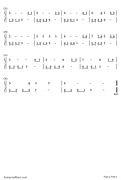 渴望主题曲谱
渴望主题曲谱 曲谱自学网今天精心准备的曲谱是《渴望主题曲谱》,下面是详解!
渴望的简谱
《渴望》的简谱是电视剧《渴望》录制的同名主题曲...
[详情]分类:曲谱大全时间:07:22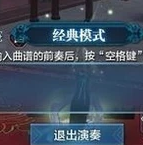 乐伶曲谱在哪
乐伶曲谱在哪 曲谱自学网今天精心准备的曲谱是《乐伶曲谱在哪》,下面是详解!
天涯明月刀ol乐伶曲谱怎么获得
首先你要学会第一职业 第二行里面...
[详情]分类:曲谱大全时间:07:21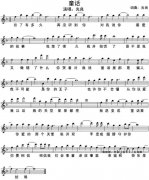 天刀童话曲谱
天刀童话曲谱 曲谱自学网今天精心准备的曲谱是《天刀童话曲谱》,下面是详解!
天涯明月刀ol文士曲谱有哪些
笛曲·水云游 由身份技能点...
[详情]分类:曲谱大全时间:07:20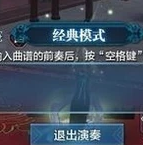 天刀曲谱弹琴
天刀曲谱弹琴 曲谱自学网今天精心准备的曲谱是《天刀曲谱弹琴》,下面是详解!
天涯明月刀乐伶怎么弹琴给别人加BUF
1:要想加BUF,首先游戏中...
[详情]分类:曲谱大全时间:07:20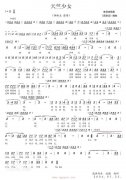 天竺少女曲谱
天竺少女曲谱 曲谱自学网今天精心准备的曲谱是《天竺少女曲谱》,下面是详解!
天竺少女的古筝谱
分类:曲谱大全时间:07:18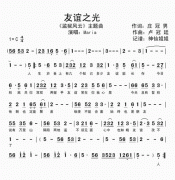 绿岛小夜曲曲谱
绿岛小夜曲曲谱 曲谱自学网今天精心准备的曲谱是《绿岛小夜曲曲谱》,下面是详解!
绿岛小夜曲原唱晋秦歌词和谱曲
绿岛小夜曲原唱晋秦歌词和谱曲...[详情]
分类:曲谱大全时间:07:17 越剧曲谱下载
越剧曲谱下载 曲谱自学网今天精心准备的曲谱是《越剧曲谱下载》,下面是详解!
求越剧简谱
吴凤花的《狸猫换太子》拷寇部分,三次举起无情棒的曲谱,...
[详情]分类:曲谱大全时间:07:13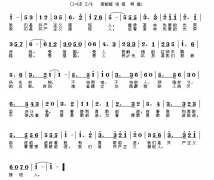 萨克斯曲谱简谱
萨克斯曲谱简谱 曲谱自学网今天精心准备的曲谱是《萨克斯曲谱简谱》,下面是详解!
学萨克斯要学五线谱还是简谱
学萨克斯必须学五线谱。
[详情]分类:曲谱大全时间:07:37
其实...
